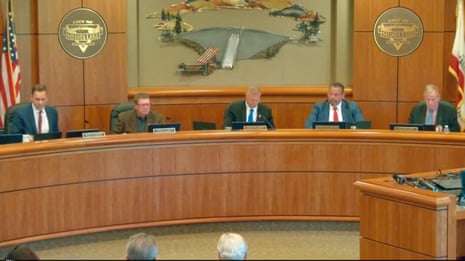Executive Summary
- Trump's 2026 budget proposes a 13% increase in defense spending, reaching $1 trillion, while cutting non-defense discretionary spending by $163 billion.
- Significant budget cuts are proposed for agencies like the EPA (54.5% reduction), State Department (83.7% reduction), Education Department (15.3% reduction), and Health and Human Services (26.2% reduction).
- The proposal faces strong opposition from both Democrats and some Republicans, who criticize the cuts to vital social programs and express concerns about the impact on national security and economic stability.
Event Overview
President Donald Trump's proposed budget for fiscal year 2026 outlines a dramatic reshaping of federal spending. The budget prioritizes defense and homeland security, allocating $1 trillion to the Pentagon, a 13% increase. To offset this rise, the proposal slashes non-defense discretionary spending by $163 billion, impacting programs related to education, environment, healthcare, and foreign aid. This blueprint, while serving as a statement of the President's priorities, faces significant hurdles in Congress, where lawmakers from both parties have voiced concerns over the proposed cuts and their potential consequences.
Media Coverage Comparison
| Source | Key Angle / Focus | Unique Details Mentioned | Tone |
|---|---|---|---|
| The Guardian | Overview of budget cuts and spending increases, including plans for a military parade. | Mentions a military parade planned to mark the 250th anniversary of the US army and Trump's birthday, and Marco Rubio keeping dual roles as secretary of state and national security advisor. | Neutral, factual reporting. |
| Washington Post | Detailed breakdown of budget cuts and increases by agency, including specific programs affected. | Provides specific dollar amounts and percentage changes for each department, highlights the administration's rationale for cuts, and notes the unlikelihood of Congress approving all requests. | Analytical and informative. |
| CNN | Political reactions to the budget proposal and specific program cuts, including analysis of the budget's impact on various sectors. | Highlights the reactions of Republican and Democratic senators and includes a correction regarding the amount of money the White House’s budget proposal would cut from the Department of Education. | Political, focusing on reactions and potential conflicts. |
Key Details & Data Points
- What: President Trump's 2026 budget proposal calls for increased defense spending, funded by significant cuts to non-defense discretionary programs across various federal agencies.
- Who: Key players include President Donald Trump, the Office of Management and Budget (OMB), Republican and Democratic members of Congress, and the heads of various federal agencies (e.g., EPA, State Department, Education Department, HHS).
- When: The budget proposal is for the fiscal year 2026. The blueprint was unveiled on Friday, May 2, 2025, with a more comprehensive plan expected in the coming weeks.
- Where: The proposed budget impacts federal agencies and programs across the United States and international initiatives funded by the US government.
Key Statistics:
- Defense Spending: $1 trillion proposed (13% increase)
- Non-Defense Discretionary Spending Cut: $163 billion (approximately 23% reduction)
- State Department Budget Cut: 83.7% reduction
Analysis & Context
The proposed budget reflects a clear prioritization of defense and national security, aligning with President Trump's stated policy objectives. However, the drastic cuts to social programs, environmental protection, and foreign aid are likely to face strong opposition. The Washington Post notes that Congress has rejected many of Trump's previous budget requests, indicating a potential for significant revisions. CNN highlights concerns from both Republicans and Democrats, suggesting that the proposal may not pass in its current form. The proposed cuts to agencies like the EPA and State Department could have far-reaching consequences for environmental regulations and international relations.
Notable Quotes
Based on my initial review, however, I have serious objections to the proposed freeze in our defense funding given the security challenges we face and to the proposed funding cuts to – and in some cases elimination of – programs like LIHEAP, TRIO, and those that support biomedical research.
President Trump successfully campaigned on a Peace Through Strength agenda, but his advisers at the Office of Management and Budget were apparently not listening.
This budget proposal would set our country back decades by decimating investments to help families afford the basics, to keep communities safe, and to ensure America remains the world leader in innovation and lifesaving research.
Conclusion
President Trump's 2026 budget proposal represents a significant departure from current spending priorities, favoring defense and homeland security over social programs and environmental initiatives. The deep cuts proposed for numerous agencies are controversial and face considerable resistance in Congress. The final budget is likely to be a product of negotiation and compromise, potentially differing significantly from the initial proposal. The impact of these potential changes would reshape national efforts across a variety of domains and the degree to which they take effect is yet to be determined.
Disclaimer: This article was generated by an AI system that synthesizes information from multiple news sources. While efforts are made to ensure accuracy and objectivity, reporting nuances, potential biases, or errors from original sources may be reflected. The information presented here is for informational purposes and should be verified with primary sources, especially for critical decisions.









